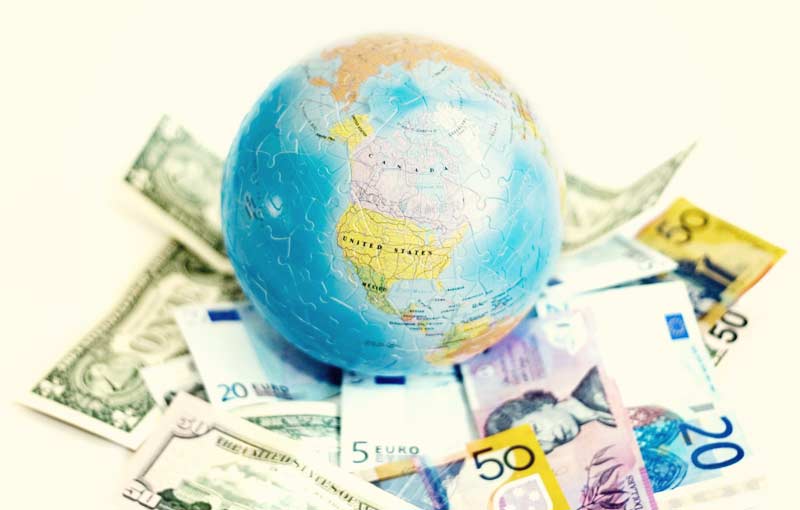 World economy is on course for another financial crisis
World economy is on course for another financial crisis
James Meadway: reports from the last few weeks say that the world economy is on course for another financial crisis – with Britain dangerously exposed
Reports from the last few weeks say that the world economy is on course for another financial crisis. Global debt levels are higher than in 2008, with poorer countries now leading debt creation. Far from being safe, Britain is dangerously exposed to crises in the rest of the world, as well as having its own domestic problems
The latest World Economic Outlook from the International Monetary Funds (IMF) paints a gloomy picture of slowing growth across the world. Even mainstream economists like former US Treasury Secretary Larry Summers are talking seriously about “secular stagnation” – the idea that developed economies are now in a permanent slump.
The IMF views the Eurozone one of the biggest risks to the global economy, but has also flagged a slowdown of growth in major less developed countries such as Brazil and Russia.
Despite all this, financial markets have been exuberant. The US’ Dow Jones index of share prices has hit record highs this year. Of growing concern, however, is the expansion of the shadow banking system highlighted by the IMF’s Global Financial Stability Review. Shadow banking refers to a tangle of unregulated and off-balance sheet activities undertaken by financial institutions that. Taken together, these off-balance sheet activities emulate the conventional banking in system, allowing (for example) loans to be made and assets to be traded, but without the usual rules and regulations that apply to banking. Shadow bank institutions are often based in tax havens.
Before the last crash, the US shadow banking system grew to around 2.5 times the size of its conventional banking system. While the UK’s shadow banking system is smaller than its conventional banks, it is still worth around 400% of GDP. Globally, around $70,000bn of financial assets are tied up in shadow banks. That’s equivalent to half of bank assets worldwide.
Shadow banking is a problem because it is beyond public control and hugely complex. It grows as a result of financial institutions like banks and hedge funds trying to avoid regulations and generate high returns as quickly as possible. Up to the 2007-8 crisis, it was being used by conventional banks to supply mortgages to customers, and then to manage those mortgages. These connections to the conventional financial system meant that during the crisis, when the shadow banking system collapsed it pulled down the rest of the financial system with it.
The shadow banking system has bounced back since then thanks to ultra-low interest rates, and the use of quantitative easing (QE) by governments across the world. Low interest rates have lowered the returns people make on their investments, pushing financial markets to look for higher-return activity. QE, which involves central banks issuing new money, has given private banks huge sums of cash to play with. And (minimal) new regulations have pushed financial institutions into searching for loopholes. QE and low interest rates were both meant to encourage economic activity in the real world. Financial regulations were intended to stop risky behaviour. Each of these measures is now producing precisely the opposite effect. Meanwhile, attempting to repay debt itself cripples growth, by diverting money from productive uses like investment.
This year’s Geneva Report, published by the Centre for Economic Policy Research, highlights a more general concern. Since 2008, the total amount of debt across the world, relative to global GDP, has risen 38 percentage points, to 212% - excluding debt owed by financial corporations, which means excluding the shadow banking system. Debt creation has generally slowed in the high-income economies, but is now racing ahead in the lower- and middle-income world, led by China. China’s external debt – debt owed to those elsewhere in the world – has risen 50% in the last year. But other large middle-income countries, such as Turkey, are also seeing sharp rises in indebtedness.
In other words, lower-income countries are staging a re-run of what the higher-income world did in the 2000s, with debt creation now leading the process of growth. Debt creation cannot run ahead of economic growth in the long run since debts must be repaid, with interest. Economic growth delivers the additional resources needed to pay interest. If it is not there, the system crashes, as we saw in the higher-income world over 2007-8, when a very large number of failures to repay debt brought down the global economy.
The UK is particularly exposed. The Coalition’s attempts to pay down the public debt have decisively failed, with George Osborne borrowing more in four years than Labour did in 13. Meanwhile, with real incomes falling for most, increasing private sector debt (such as credit card and mortgage debt) are helping sustain the “recovery”.
The UK’s financial system has total liabilities of something over 1,300% of GDP. It is heavily internationalised, meaning it is vulnerable to risks elsewhere in the world. For example, British banks, led by HSBC, have loaned more than any other foreign banks into China. After the bank bail-outs of 2008, there is an expectation that, if anything goes wrong, the costs of these risks will be borne by wider society.
The situation will stabilise if there is a return to sustained growth (leaving aside its environmental consequences). But this is not expected. More likely will be a process of substantial debt write-off, of which Wonga’s recent write-off is perhaps a harbinger. The key question will be in managing this process so that society is protected.

